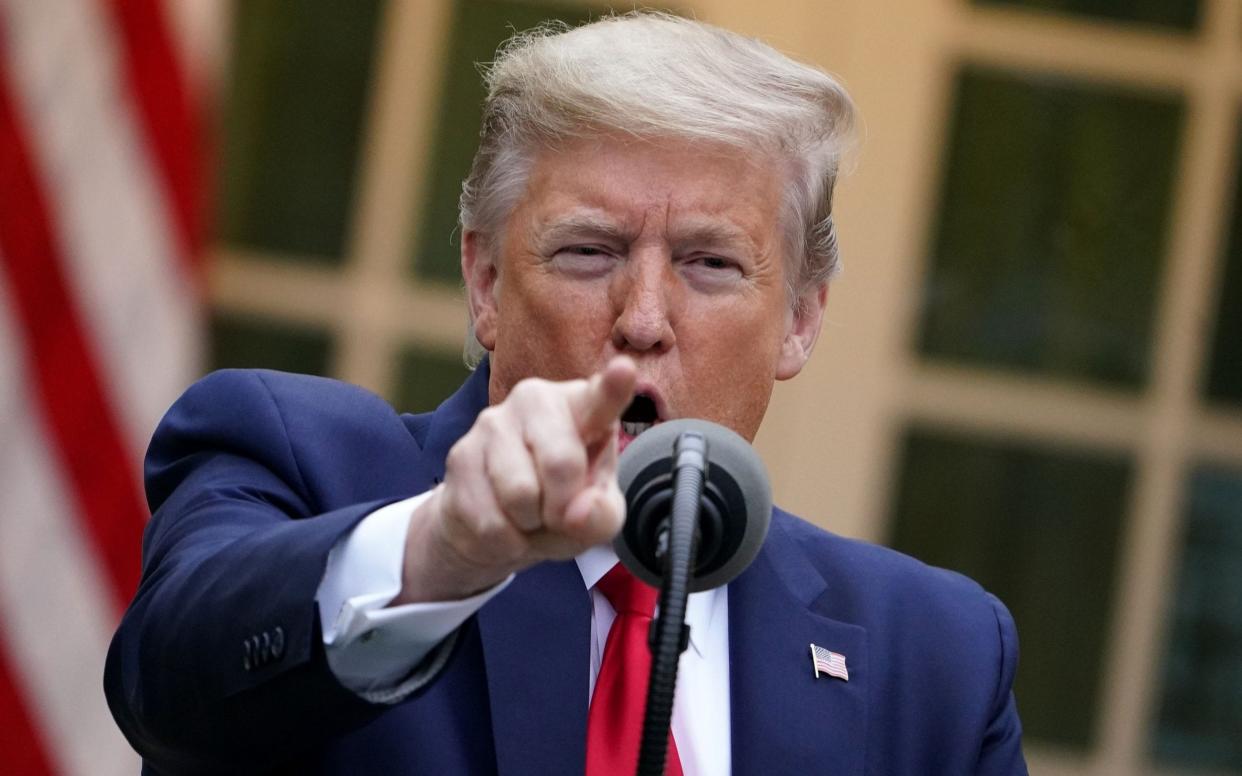Fact check: Trump’s WHO charge sheet and how it stacks up

Announcing the withdrawal of US funding for the World Health Organization, President Trump laid out seven main charges against the organisation.
Here are the accusations in Mr Trump's own words - and how they compare to the facts.
1. The WHO is “very China centric”
The WHO represents 193 member countries. It’s most senior experts and advisers tend to come from the West.
2. “One of the most dangerous and costly decisions from the WHO was its disastrous decision to oppose travel restrictions from China and other nations”
Under the International Health Regulations (2005), binding on all WHO member states, health measures “shall not be more restrictive of international traffic and not more invasive or intrusive to persons than reasonably available alternatives”.
The US that was pivotal in getting this law in place and it means the WHO can only recommend travel restrictions in the most extreme circumstances.
From an early stage the WHO described such travel bans as “ineffective in most situations”, citing good evidence which shows that restricting the movement of people and goods during public health emergencies may interrupt aid and technical support and disrupt businesses. This was widely taken to mean the WHO opposed all travel restrictions.
3. “The WHO failed to adequately obtain, vet, and share information in a timely and transparent fashion”
Hard to square with the record. China first alerted the WHO to the outbreak on 31 December. It's report was shared around the world the following day. Newspapers, briefed by the WHO, started writing about it soon after.
On 10 January WHO warned that the virus’s “modes of transmission remain unclear” and advised anyone “travelling in or from affected areas” to avoid “close contact” with others. WHO guidance on laboratory testing issued the same day, warned that healthcare workers should use full personal protective equipment when dealing with suspected cases.
4. “Through the middle of January, [the WHO] parroted and publicly endorsed the idea that there was not human to human transmission happening, despite reports and clear evidence to the contrary”
On January 14 the WHO issued a much criticised tweet stating that “preliminary investigations conducted by the Chinese authorities have found no clear evidence of human-to-human transmission”.
However at a press conference on the same day, Maria Van Kerhkove, the American epidemiologist heads the emerging diseases and zoonosis unit at the WHO, told reporters there was “the possibility of human-to-human transmission between people" and "there's also the possibility of super-spreading events".
She added: "From the information that we have, it is possible that there is limited human-to-human transmission, potentially among families, but it is very clear right now that we have no sustained human-to-human transmission."
5. “The WHO failed to investigate credible reports from sources in Wuhan that conflicted directly with the Chinese government’s official accounts. There was credible information to suspect human-to-human transmission in December 2019, which should have spurred the WHO to investigate.”
The WHO was not alerted to the outbreak until 31 December 2019 by the Chinese authorities.
ABC News in America reported last week that the US military's National Center for Medical Intelligence (NCMI) had information on the outbreak as early as November as a result of “analysis of wire and computer intercepts, coupled with satellite images”.
This intelligence was given to the Whitehouse, say ABC’s sources, but not the WHO. The White House denies the report exists. ABC News is part of the American Broadcasting Corporation.

6. “The delays the WHO experienced in declaring a public health emergency cost valuable time, tremendous amounts of time”
The WHO convened an Emergency Committee on 22 January to assess whether the outbreak constituted a public health emergency. The independent members from around the world could not reach a consensus based on the evidence available at the time.
The committee reconvened on 30 January two days after the first reports of limited human-to-human transmission were reported outside China. A Public Health Emergency of International Concern (PHEIC) was declared the same day.
7. “The inability of the WHO to obtain virus samples to this day has deprived the scientific community of essential data”
Chinese scientists publicly released the genetic sequence of Covid-19 on January 11 and by early February the WHO was in a position to distribute a test for Covid-19 worldwide.
A WHO delegation had been blocked by the Chinese government from visiting Wuhan in the first few weeks of the outbreak.
This led its director general, Tedros Adhanom Ghebreyesus, to fly to Beijing on 29 January to negotiate entry and information sharing.
Dr Tedros was criticised for appearing to flatter the Chinese leadership during the trip, though his supporters say such diplomatic niceties were the price he paid for a WHO team to eventually gain access to Wuhan on February 22.
Protect yourself and your family by learning more about Global Health Security

